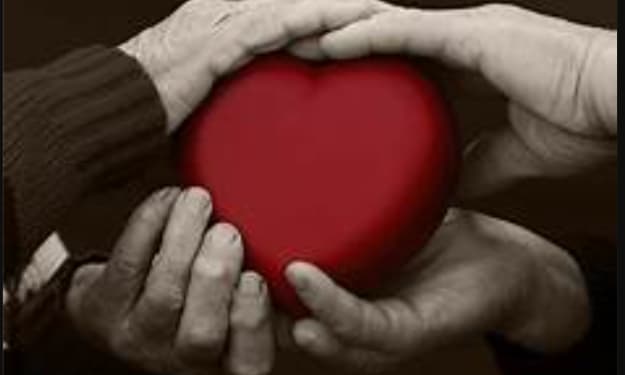When Love Hurts: Healing Relationship Wounds
Navigating Pain, Rebuilding Trust, and Restoring Love
Love has the power to bring immense joy and fulfillment, but it can also leave behind wounds that require healing. When relationships face challenges and pain, it is crucial to address the wounds and embark on a journey of healing and restoration. In this blog, we will explore the process of healing relationship wounds, focusing on navigating pain, rebuilding trust, and restoring love. By understanding the steps involved in healing, practicing self-care, seeking support, and fostering open communication, individuals can embark on a path towards healing, growth, and the restoration of a healthy and fulfilling relationship.
1. Acknowledging and Validating Pain:
The first step in healing relationship wounds is acknowledging the pain that exists. Validate your emotions and experiences, recognizing that they are real and valid. Allow yourself to grieve, express your feelings, and process the pain in a healthy and constructive manner.
2. Practicing Self-Care:
Self-care is essential during the healing process. Prioritize your physical, emotional, and mental well-being. Engage in activities that bring you joy, nurture your soul, and promote healing. Take time to reflect, heal, and rebuild your sense of self outside of the relationship.
3. Fostering Open and Honest Communication:
Effective communication is vital for healing relationship wounds. Create a safe space for open and honest dialogue with your partner. Express your feelings, concerns, and needs, and actively listen to their perspective. Communicate with empathy and strive for understanding and resolution.
4. Rebuilding Trust:
Rebuilding trust is a crucial aspect of healing relationship wounds. It requires consistency, transparency, and accountability. Be honest, reliable, and follow through on your commitments. Trust is rebuilt through actions, not just words, so demonstrate your trustworthiness over time.
5. Seeking Professional Help:
In challenging situations, seeking professional help can be beneficial. Couples therapy or counseling provides a neutral space where both partners can address their wounds, explore underlying issues, and work towards healing and restoration. A trained professional can offer guidance and tools to navigate the healing process.
6. Cultivating Forgiveness:
Forgiveness is a powerful tool for healing relationship wounds. It involves letting go of resentment and releasing the emotional burden that the pain has caused. It does not mean forgetting or condoning hurtful actions but choosing to move forward with a renewed sense of compassion and understanding.
7. Learning and Growing Together:
Healing relationship wounds provides an opportunity for growth and transformation. Commit to learning from the challenges and mistakes, both individually and as a couple. Embrace the lessons learned and work together towards personal and relational growth, fostering a stronger and healthier relationship.
8. Patience and Time:
Healing relationship wounds takes time. Be patient with yourself and your partner as you navigate the healing process. Understand that healing is not linear, and setbacks may occur. Allow the necessary time for healing, growth, and rebuilding trust.
Healing relationship wounds is a complex and often challenging journey that requires time, patience, and understanding. It is crucial to be kind and patient with both yourself and your partner as you embark on the healing process. Just as physical wounds take time to mend, emotional wounds require adequate time to heal as well.
One important aspect to remember is that healing is not a linear process. There may be ups and downs along the way, and setbacks are not uncommon. It's essential to approach these setbacks with compassion and perseverance, recognizing that they are a natural part of the healing journey. Rather than viewing setbacks as failures, see them as opportunities for growth and learning.
During the healing process, it's vital to give yourself and your partner the necessary time and space to heal. This might involve creating boundaries and establishing clear communication about your needs and emotions. Understand that each person heals at their own pace, and respecting that individual journey is crucial for building a stronger foundation.
Rebuilding trust is another significant aspect of healing relationship wounds. Trust may have been broken, and it takes time and consistent effort to restore it. Trust is rebuilt through open and honest communication, transparency, and demonstrating consistent actions that align with your words. It is essential to be patient and understanding as trust is gradually rebuilt, as rushing this process can hinder the healing and rebuilding process.
During the healing process, it can also be beneficial to seek support from trusted friends, family members, or even professionals such as therapists or counselors. These individuals can provide guidance, perspective, and a safe space to express your emotions and concerns. They can help you navigate the challenges that may arise and offer insights into how to foster healing and growth.
Remember, healing relationship wounds takes time and effort from both partners involved. It requires self-reflection, forgiveness, and a genuine desire to move forward. By being patient with yourself and your partner, allowing setbacks and honoring the healing journey, you can work towards a healthier and more fulfilling relationship.
Conclusion:
Healing relationship wounds is a challenging but necessary journey towards restoration and growth. By acknowledging and validating the pain, practicing self-care, fostering open communication, rebuilding trust, seeking professional help when needed, cultivating forgiveness, and allowing time for healing, individuals can embark on a path towards healing and the restoration of a healthy and fulfilling relationship. Remember that healing takes time and effort from both partners, but with dedication, empathy, and a shared commitment to growth, love can triumph over pain, and relationships can be rebuilt stronger than before.







Comments
There are no comments for this story
Be the first to respond and start the conversation.